Moscow << MAHS kow or MAHS koh >> is the capital of Russia and one of the largest cities in the world. About 13 million people live in Moscow. Moscow is the communications, financial, governmental, and transportation center of Russia. It is also a major center of culture, industry, and scientific development. Moscow lies in western Russia, in the European part of the country. The Moscow River, for which the city was named, flows through the city. 
Moscow emerged as the most powerful Russian city in the late 1400’s. The princes of Moscow played a leading role in uniting various Russian lands and in conquering non-Russian peoples and territories. Moscow became the capital of the Russian Empire and was the home of Russia’s czars (emperors) until 1712, when the capital was moved to St. Petersburg.
Moscow again became the Russian capital in 1918, after Communist revolutionaries known as Bolsheviks took control of the country. In 1922, Russia and three other republics were united to form the Union of Soviet Socialist Republics (U.S.S.R.). Moscow was chosen as the capital of the U.S.S.R., which grew to include 15 republics.
In 1991, the Communists lost power and the U.S.S.R. was dissolved. Russia and the other former Soviet republics became independent countries. Moscow remained the capital of Russia.
The city
Layout of Moscow.
Moscow is built in the shape of a wheel. This shape can be traced to the city’s early history, when rings of fortifications were built to protect it from attack. Today, wide boulevards extend from the city’s center, forming the spokes of the wheel. They cross circular boulevards, which make up the inner and outer rims of the wheel. A major highway circles Moscow. Past the highway lies the Green Belt, a ring of forests and parks covering about 695 square miles (1,800 square kilometers).
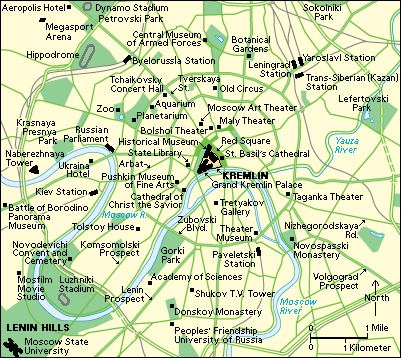
The oldest and busiest sections of Moscow lie near the Kremlin, a huge walled fortress at the city’s historic center. Just north and east of the Kremlin is the main business and administrative district. Encircling this area and the Kremlin are Moscow’s main shopping streets and many cultural buildings. Most of the city’s new residential and industrial districts lie in the outermost rings.
Famous landmarks.
At the heart of the city stands the Kremlin. This old fortress was the center of the Soviet Union’s government until that nation was dissolved in 1991. Since then, it has been the center of the Russian government. Inside its walls, which extend almost 1 1/2 miles (2.4 kilometers), are beautiful cathedrals and palaces as well as government buildings. Some of the cathedrals date from the 1400’s. Many czars are buried in the Cathedral of the Archangel Michael.
The Grand Kremlin Palace was built in the early 1800’s as an imperial residence. The building later was the meeting place of the Supreme Soviet, the parliament of the Soviet Union. The Palace of Congresses (now formally known as the State Kremlin Palace) was built in 1961. It is used for cultural performances and government meetings and receptions. From 1961 to 1990, it also housed Soviet Communist Party meetings.
Red Square lies just outside the Kremlin walls. This large plaza, about 1/4 mile (0.4 kilometer) long, took its name in Russian from an old word meaning both beautiful and red. Huge military and civilian parades in Red Square celebrate various special occasions.
Loading the player...Red Square in Moscow
St. Basil’s Cathedral—a Russian church famous for its many colorful, onion-shaped domes—is also on Red Square. Originally built more than 400 years ago to honor several military conquests, this building is now part of the State Historical Museum. Russia’s State Duma (parliament) building lies west of the Kremlin.
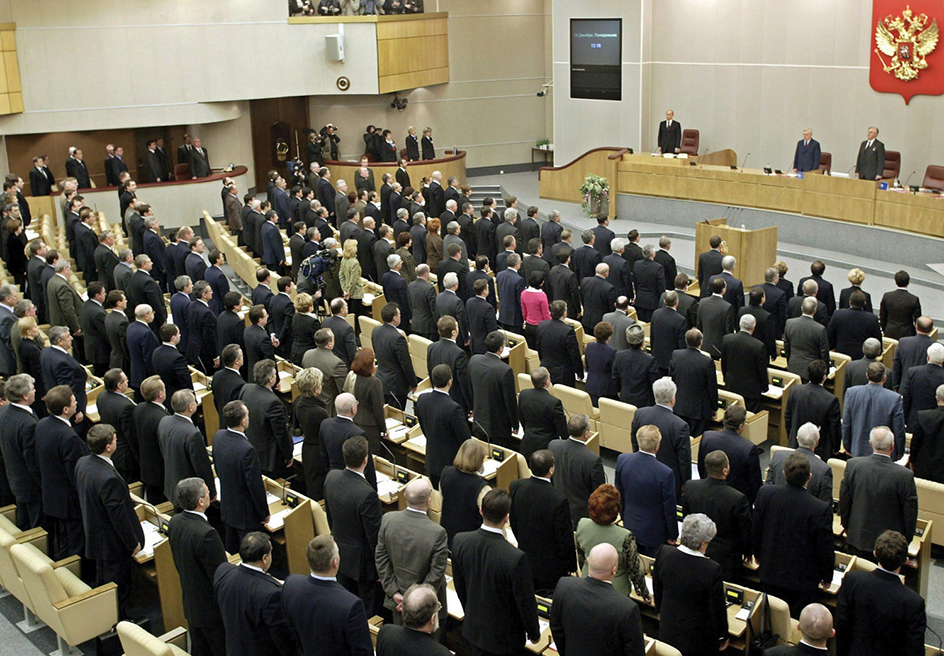
People
People of Moscow are called Muscovites. Moscow’s population is a mixture of many nationalities. Russians are by far the largest group in Moscow. Other nationalities include Armenians, Belarusians, Tatars, and Ukrainians. Moscow does not have separate ethnic neighborhoods. The government has attempted to limit the number of people who live in Moscow.
Housing.
Most Muscovites live in small, one- or two-room apartments. The majority of these apartments are in high-rise buildings erected since the 1950’s. In the 1990’s, Moscow saw a boom in housing construction. During that time, most existing housing, which had been built and owned by the government, was privatized—that is, shifted from government to private ownership. Many wealthy Muscovites upgraded and enlarged their apartments. In the late 2010’s, the city expanded its efforts to replace many older apartment buildings from the mid-1900’s and to resettle their residents in new, larger apartment buildings.
Education.
Moscow has many institutes of higher education, including dozens of universities. The best-known of these include M. V. Lomonosov Moscow State University, Moscow State Institute of International Relations (often called MGIMO, from its name in Russian), and the main campus of the Higher School of Economics (HSE). A variety of specialized institutes train students in specific fields, such as engineering or medicine.
Lomonosov Moscow State University, established in 1755, ranks as the oldest university in Russia. Students from around the world study international relations, economics, law, and business at MGIMO. HSE has a strong international reputation in economics and other academic disciplines.
Like all Russian children, Moscow youngsters must attend school from age 6 to 17. Moscow has hundreds of elementary schools and general high schools, and dozens of technical or vocational high schools.
Religion.
From 1917 through the 1980’s, the Communist government of the Soviet Union discouraged the practice of all religions. As a result, many Muscovites do not follow any religious faith. Many others, however, have continued to practice a religion. Most religious Muscovites of Russian nationality belong to the Russian Orthodox Church.
The Communists closed or destroyed many Orthodox churches. Some were made into museums. In 1990, however, the Soviet government ended all religious restrictions. Places of worship that had been closed for decades reopened. Christ the Savior Cathedral, which had been destroyed by the Communists in 1931, was rebuilt. It reopened in 1997, and many Muscovites saw its rebuilding as a symbol of the rebirth of their city.
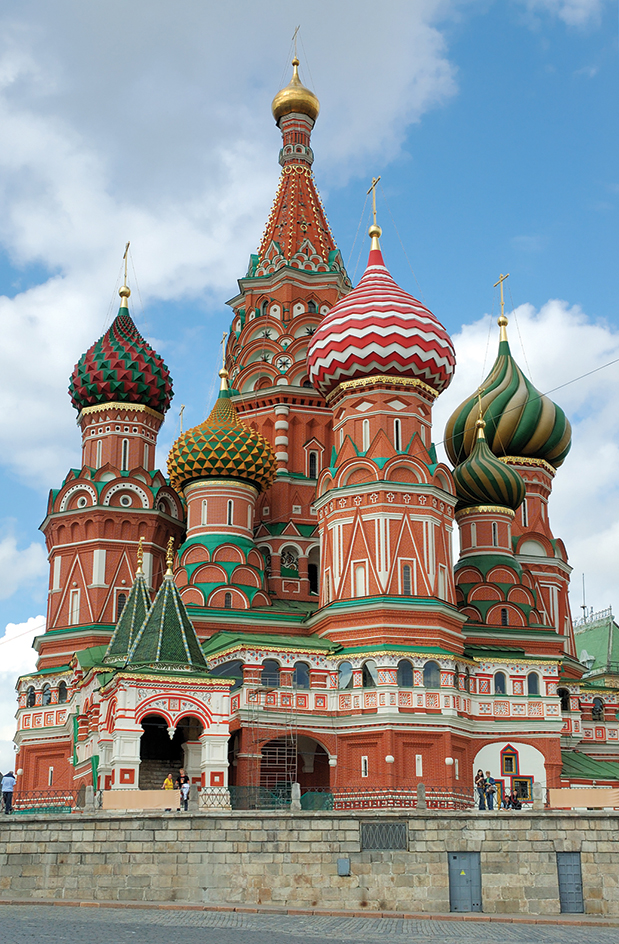
Non-Orthodox religious Muscovites include Baptists, Jews, Muslims, and Roman Catholics. Moscow has a few Catholic and Protestant churches, Jewish synagogues, and Islamic mosques.
Social problems.
During the late 1980’s, crime became a growing problem in Moscow, partly due to the loosening of formerly strict police controls. The problem grew worse in the 1990’s as economic performance and police discipline declined. The crime rate reached its peak in the first decade of the 2000’s. However, some offenses, including those connected to the illegal drug trade, continued to increase.
Homelessness is also a problem in Moscow. The homeless people include refugees who have fled ethnic violence in other parts of the country.
Moscow has long suffered from pollution problems. For many years, the Soviet government emphasized industrial growth with little concern for the environment. Exhaust from factories and automobiles fouled the air. Poor water and sewage treatment also caused problems. The increased use of cars since the fall of the Soviet Union has worsened matters. Muscovites have begun using high-technology equipment and energy-saving devices to control pollution. They have also begun closing or moving some factories that pollute.
Cultural life
Arts.
Moscow has long been a center of Russian and world culture. The Bolshoi Theater presents operas and ballets. The Bolshoi Ballet is internationally known and admired. Dancers from all over the country train at the Bolshoi Theater school. The Moscow State Symphony and other orchestras perform at the Tchaikovsky Concert Hall as well as other venues in Moscow. The city also has several famous theaters, including the Maly and Moscow Art theaters.
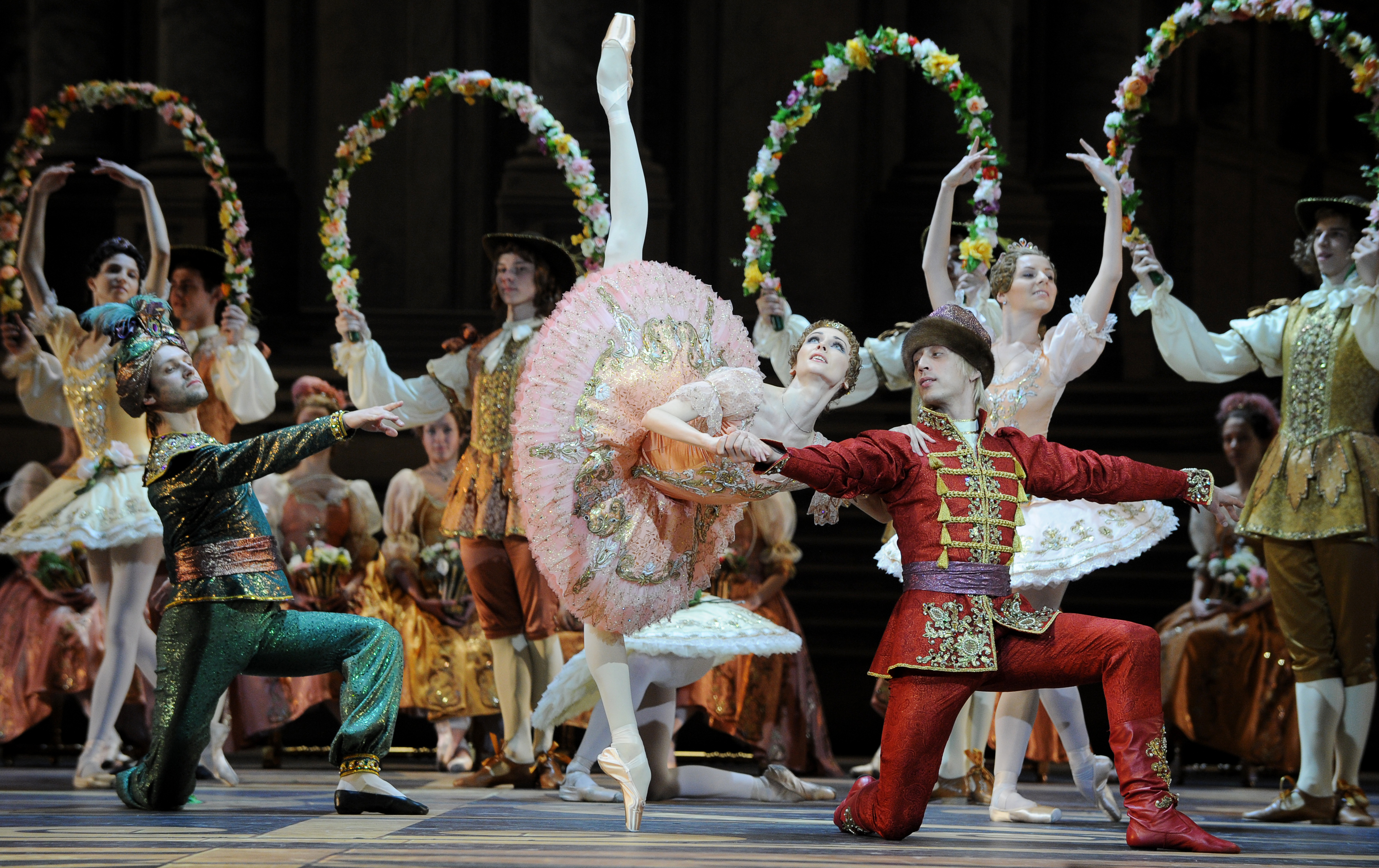
Museums and libraries.
Moscow has many museums and art galleries. The State Historical Museum attracts many students of Russian history. The State Central Museum of Contemporary History of Russia, commonly called the Revolution Museum, focuses on Russian history from the mid-1800’s to the present. The Armory Museum in the Kremlin displays dazzling treasures that belonged to the czars. The Tretyakov Gallery contains a collection of Russian traditional art.
Moscow has hundreds of libraries. The Russian State Library, known as the Lenin Library during the Soviet years, is the largest library in Russia and one of the largest in the world. See Library (Eastern Europe and Russia.).
Entertainment and recreation.
Moscow has many recreational facilities. The huge Luzhniki Stadium sports complex was completed in 1956 and later expanded for the 1980 Olympics. The Luzhniki Stadium itself seats about 103,000 people. It is used mainly for soccer, the country’s most popular sport, and for track events. It also includes swimming pools and smaller sports arenas.
Gorki Park is Moscow’s most popular amusement center. It features an outdoor theater and facilities for boating, ice skating, and tennis. The park, which opened in 1925, covers about 300 acres (120 hectares).
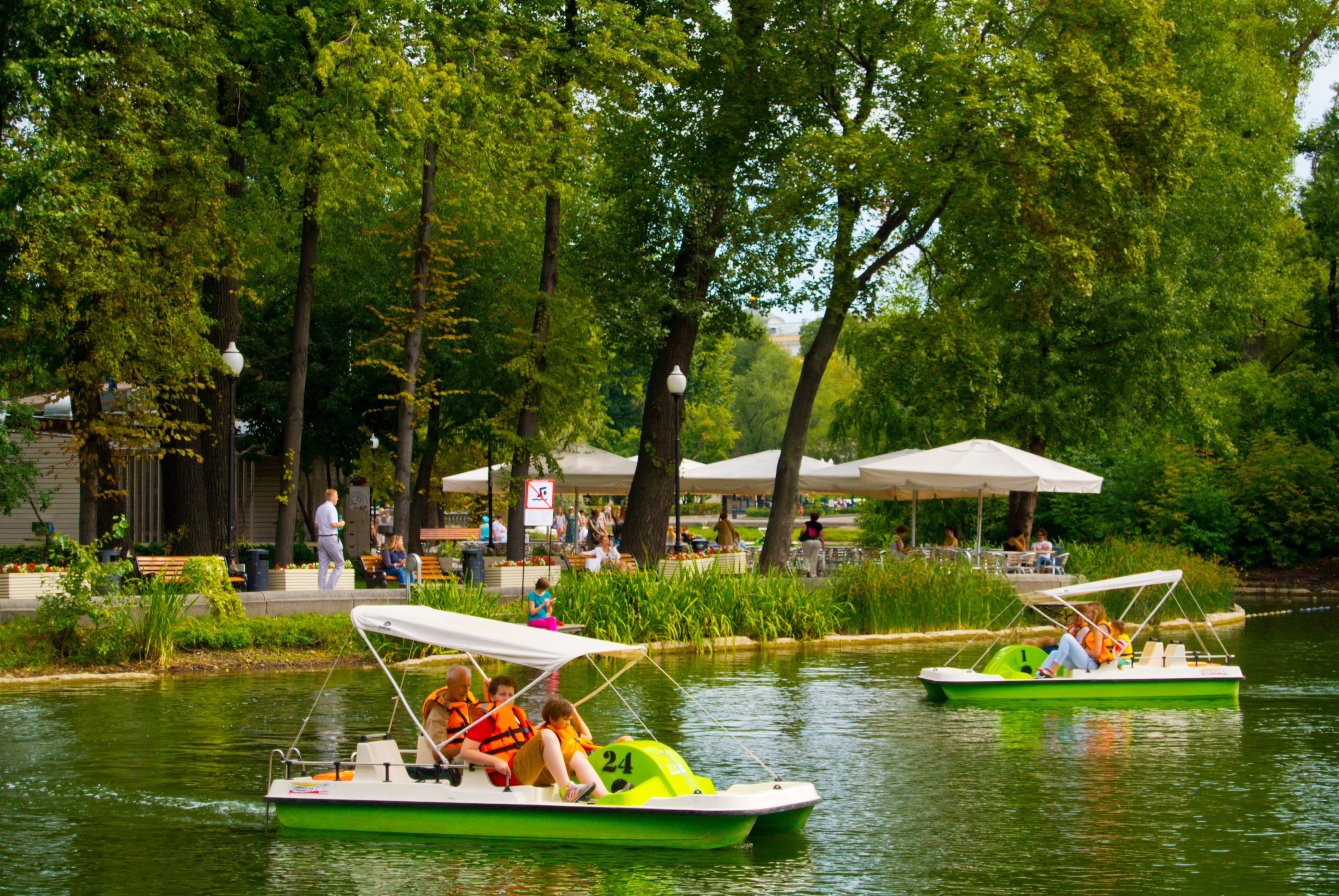
The Arbat is a popular district of downtown Moscow. It has many shops and restaurants. Folk musicians, roving artists, and other entertainers make the Arbat a lively section of town.
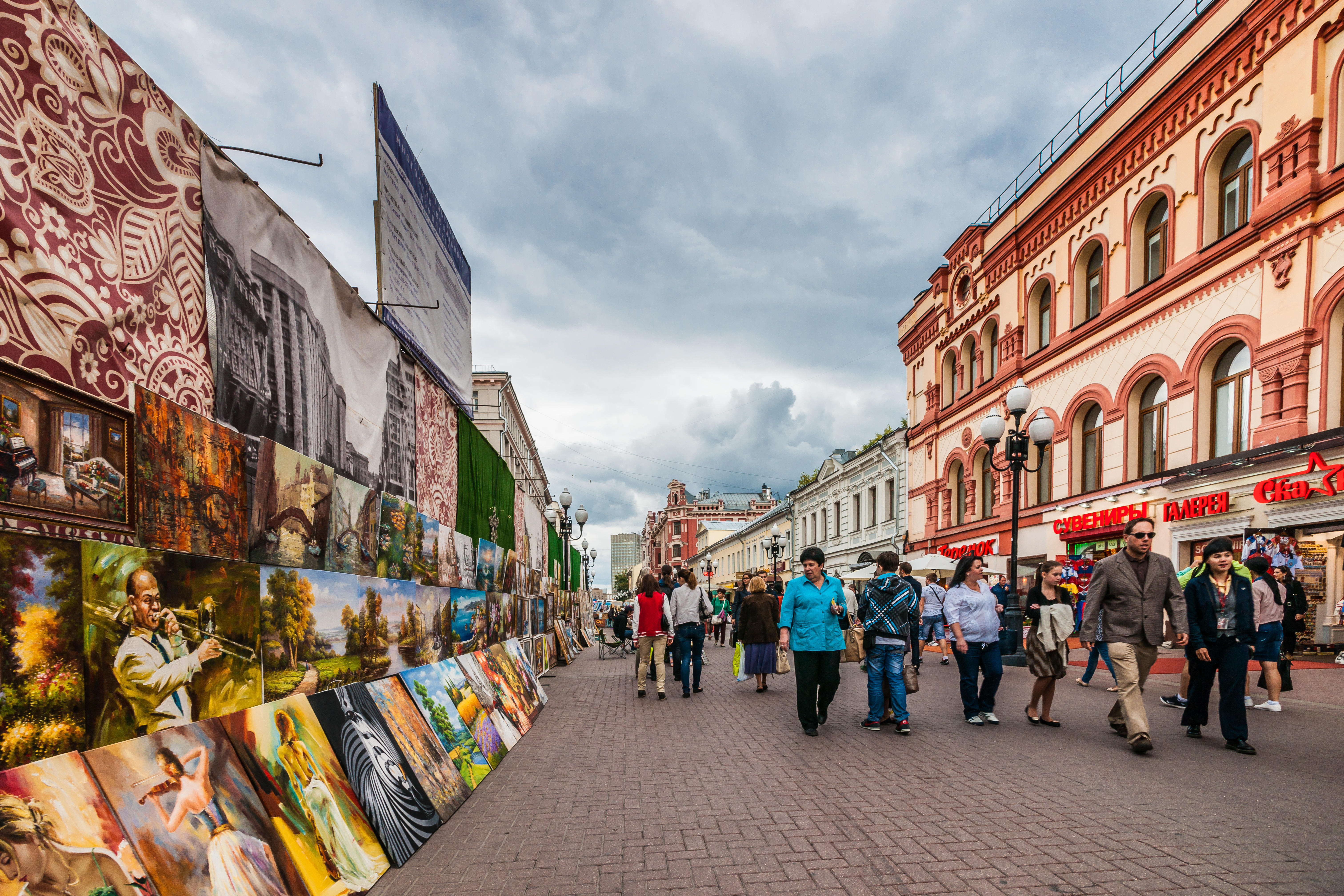
Chess is a popular pastime for Muscovites, and many chess champions play at the city’s Central Chess Club. The Moscow Zoo is a popular attraction. The Moscow Circus is one of the best-known circuses in the world.
Economy
Many of the people of Moscow are employees of national or city government agencies. Under Communism, the government controlled all business and economic activity. Today, some Moscow businesses are still controlled by the government. Others, including many foreign businesses, are privately owned. Moscow has also become a financial center, with most Russian banks headquartered there. Many international banks have branches in Moscow.

Manufacturing.
Moscow is one of Russia’s leading industrial cities. Its factories produce a wide variety of goods. These include automobiles, buses, chemicals, dairy products, electrical machinery, measuring instruments, processed foods, steel, textiles, and trucks.
Transportation.
Moscow serves as Russia’s transportation center. Highways and railways extend in all directions from the city to most parts of the country. A high-speed passenger rail line connects Moscow with St. Petersburg. Moscow has five major airports, the largest of which is in Domodedovo, south of the city. Sheremetyevo International Airport handles most international flights. The Moscow Canal links the city to the Volga, Europe’s longest river.
The people of Moscow are proud of their subway system, the Metro. It has about 200 stations, which are among the fanciest in the world. Many look like palace halls and are decorated with chandeliers, marble panels, paintings, stained glass, and statues. The Metro opened in 1935. It has about 200 miles (325 kilometers) of track. Millions of passengers ride it daily.
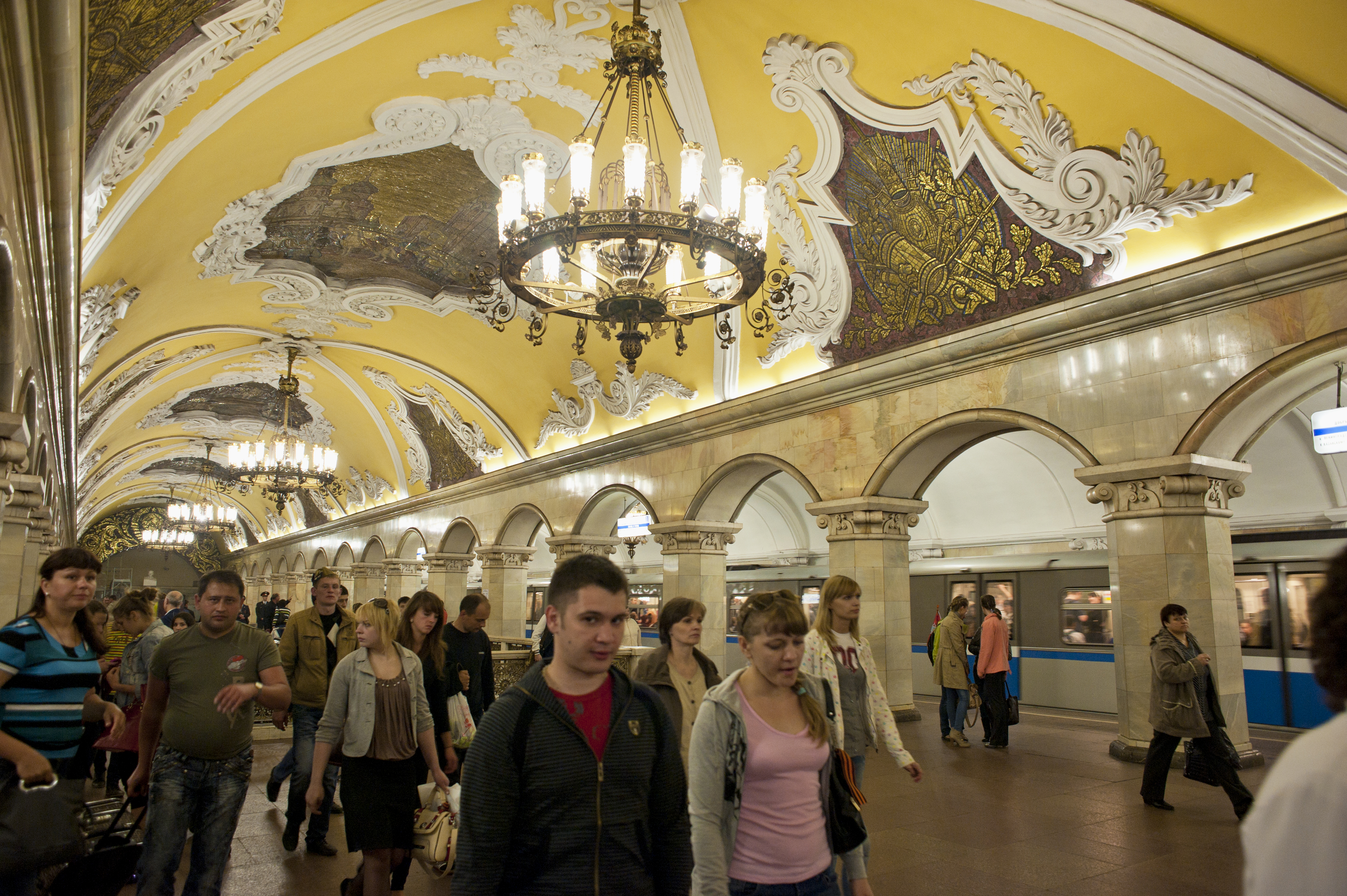
Communications.
Many magazines, journals, and newspapers are published in Moscow. These include the important national newspapers Izvestia (News) and Komsomolskaia Pravda (Youth Communist League Truth). Evening Moscow covers local news. Many Muscovites also read news websites.
Several of Russia’s national television and radio networks are government operated and have their headquarters in Moscow. The city has several local channels and receives local programs from St. Petersburg. Moscow is also home to some of Russia’s privately owned radio and television stations.
Government
Moscow’s laws are made by a City Duma (council) of 45 members elected to five-year terms by the voters in individual election districts. The City Duma does much of its work in regular committees. These committees deal with various economic, social, environmental, and organizational matters.
A mayor heads the executive branch of the Moscow city government. The mayor is assisted by eight deputy mayors. The people of Moscow directly elect the mayor.
The city administration also includes prefects, officials appointed by the mayor to administer city services and policies in 12 administrative areas. Moscow is further divided into 146 municipal districts.
Moscow has special status in Russia as a federal city. As a result, the City Duma and mayor select Moscow’s two members of the upper house of Russia’s parliament.
History
The rise of Moscow.
No one knows when Moscow was first settled. The first recorded reference to the town is in an early Russian historical chronicle under the year 1147. At that time, Moscow was a possession of Yuri Dolgoruki, a Russian prince who ruled the surrounding region. The town lay on important land and water trade routes, and it grew and prospered.
During the 1200’s, Tatar invaders from Asia conquered Moscow and other Russian lands. The Russian princes were forced to recognize the Tatars as their rulers and to pay them taxes. During the 1300’s, the Moscow princes collected taxes in their region for the Tatars. The Moscow princes expanded their territory by buying lands or seizing them from rival princes.
By the late 1400’s, Moscow had become the most powerful Russian city. Moscow threw off Tatar control during the late 1400’s under Ivan III (the Great). His grandson, Ivan IV (the Terrible), was crowned czar of all Russia in 1547. Moscow was his capital.
Moscow grew rapidly during the 1600’s. The czars built palaces in the Kremlin, and nobles built mansions. New churches and monasteries arose, and industries developed. In 1712, Peter I (the Great) moved the capital to St. Petersburg. However, Moscow remained an important center of culture and trade.
Destruction and rebirth.
In the fall of 1812, invading French troops under Napoleon I sought to capture Moscow. The French and Russian armies fought a major battle at Borodino, just outside Moscow. The French army won the battle and entered Moscow without a struggle. Most of the people had left the city. Soon afterward, fires destroyed most of Moscow. Historians believe that most of the fires were set by retreating Russians, but that others were started by looting troops from Napoleon’s army. After about a month, the French troops left and began a disastrous retreat through the cold Russian winter.
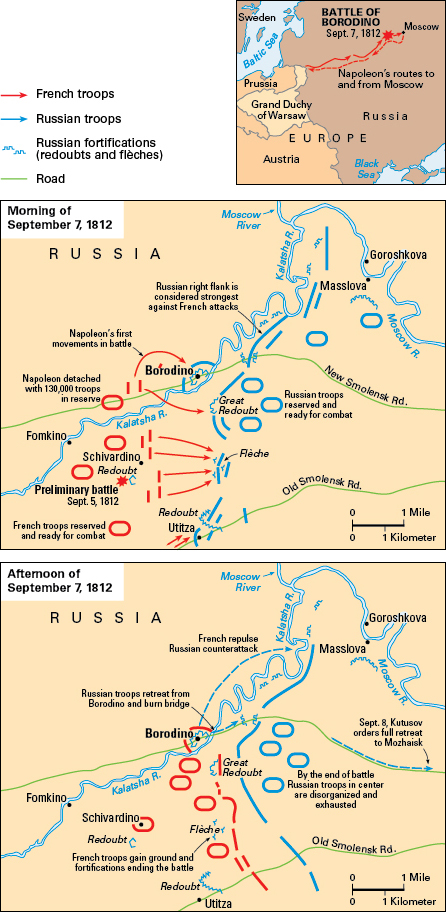
The rebuilding of Moscow began almost immediately. New residences were built, and factories began to appear. By the mid-1800’s, Moscow had emerged as the railway and industrial center of Russia. The city’s population grew rapidly, passing 1 million by 1900.
Revolution and Soviet rule.
In 1905 and in 1917, fierce revolutions against the czar took place in several Russian cities, including Moscow. In the 1917 revolution, the government fell to the Bolsheviks, who moved the capital back to Moscow in 1918.
During World War II (1939-1945), German troops advanced almost to the city but never captured it. Factories and government offices were moved to the eastern part of the country. German air raids damaged Moscow, but severe winter weather and determined Soviet forces stopped the Germans in 1941. The Battle of Moscow was an important victory and proved the Germans could be defeated. See World War II (The invasion of the Soviet Union).
In 1960, Moscow’s city boundaries were expanded, more than doubling the city’s area. The 1980 Summer Olympic Games were held in Moscow, the only Soviet city ever to host the Olympics.
In 1990, Moscow held its first democratic election for the City Duma. Democratic reformers won a majority of the seats. In August 1991, several Communist officials attempted to overthrow Soviet President Mikhail S. Gorbachev. Moscow became the center of protests that helped to end the coup. In December 1991, Gorbachev resigned, and the Soviet Union was dissolved.
Recent developments.
Christ the Savior Cathedral, destroyed by the Communists in 1931, reopened in 1997. Work continued on its interior in the early 2000’s.
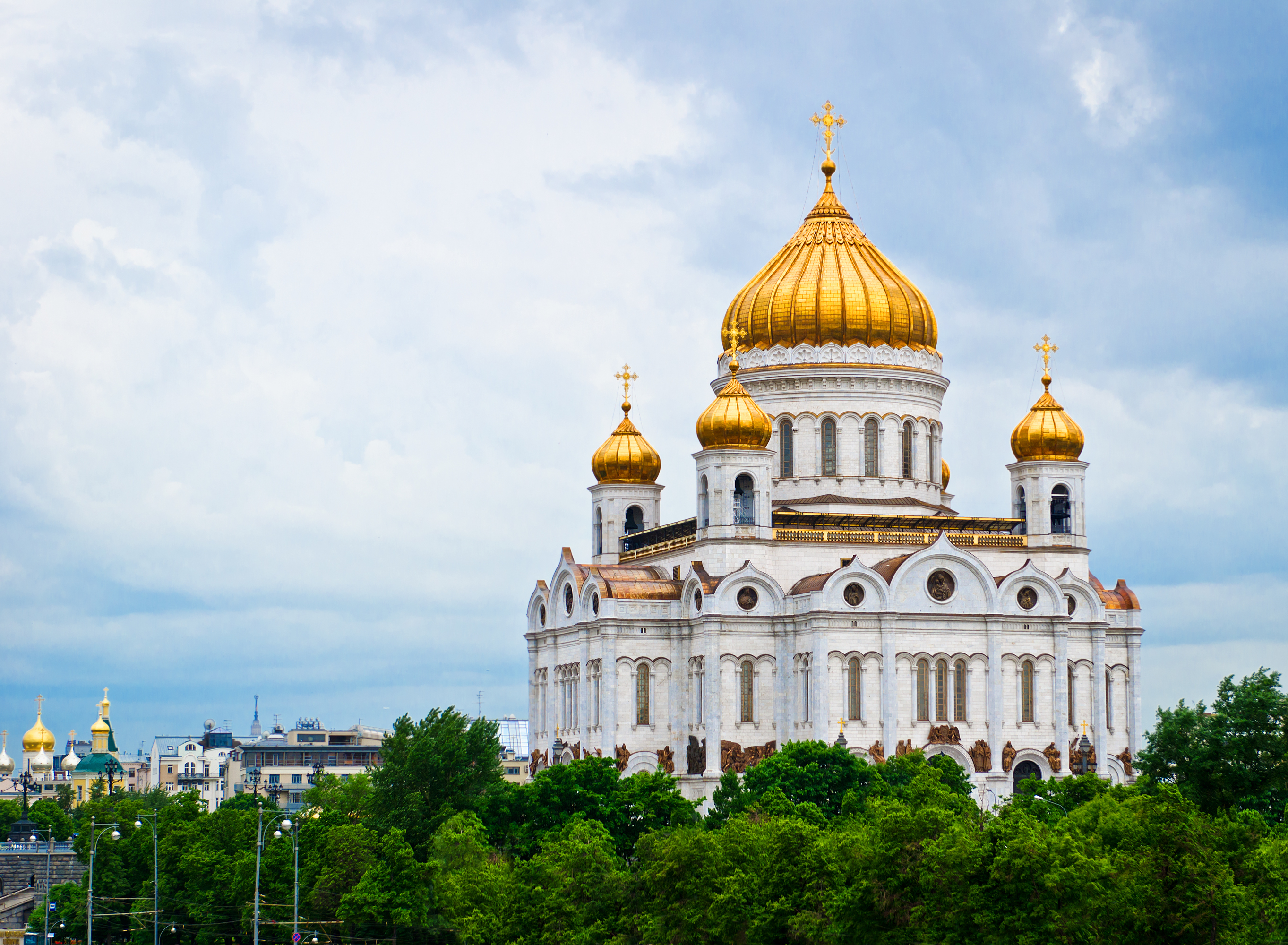
In 1999, explosions destroyed several apartment buildings and killed more than 200 people. Russian officials blamed rebel terrorists from the republic of Chechnya, but conclusive evidence has never been found.
In October 2002, terrorists seized a Moscow theater and held about 700 audience members, actors, and theater personnel as hostages. They demanded a withdrawal of Russian troops from Chechnya. Russian security forces stormed the theater and killed or captured the terrorists. However, over 100 of the hostages were killed in the raid.
Major demonstrations took place in Moscow in 2011 and 2012. In December 2011, protesters filled the streets after legislative elections they believed were fraudulent. In May 2012, many protesters returned to voice opposition to the inauguration of Vladimir Putin as president. They accused Putin of election fraud and other abuses of power.
In March 2024, terrorists attacked people attending a rock concert at Crocus City Hall in Moscow. Over 140 people were killed and hundreds more were injured. The Islamic State, a terrorist group, claimed responsibility for the attack. American and French intelligence services confirmed the group’s responsibility. But the Russian government claimed without evidence that Ukraine, a country at war with Russia, was responsible for the attack. The Ukrainian government denied any responsibility.
